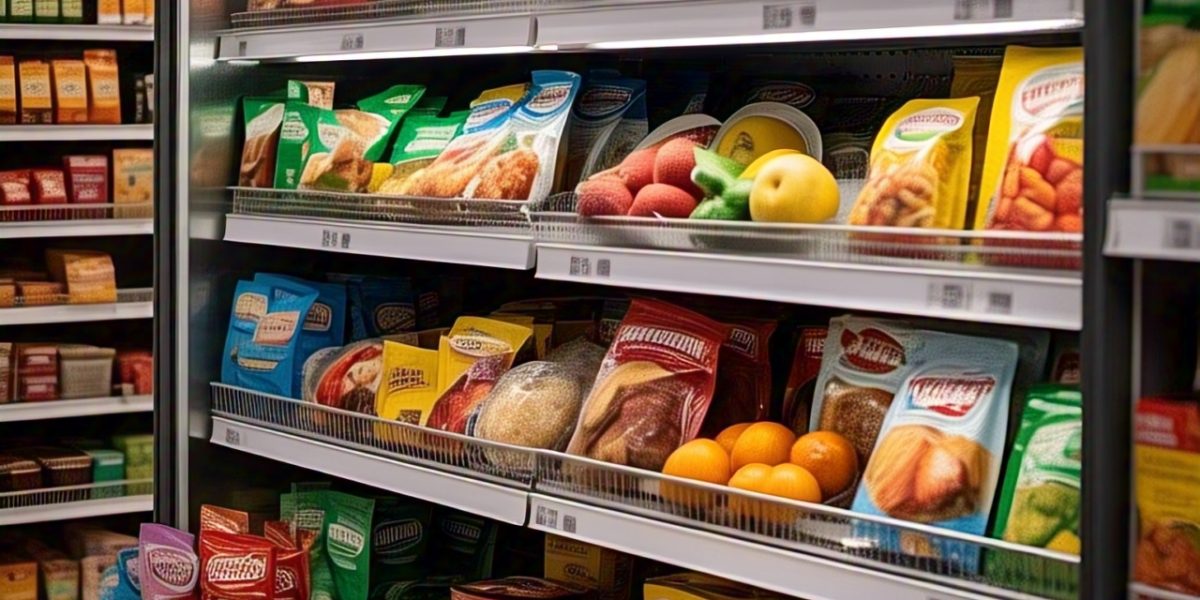United States Frozen Food Market: In-Depth Analysis & Future Trends (2025-2033)
Market Overview
The United States Frozen Food Market, valued at US$ 79.66 billion in 2024, is projected to grow at a CAGR of 8.91% and reach US$ 171.56 billion by 2033. Factors such as increasing consumer preference for ready-to-eat meals, advancements in freezing technology, and the expansion of e-commerce are driving this growth.
Market Segmentation & Key Insights
- Frozen Meals Market
This segment includes breakfast foods, entrees, and pizzas. The demand for quick, convenient, and nutritious meal options is fueling growth. Innovations like healthier frozen meal choices, organic ingredients, and plant-based options are reshaping consumer preferences.
- Meat, Poultry & Seafood
- Seafood: Shrimp, salmon, cod, and shellfish lead the category.
- Poultry: Nuggets, wings, and turkey are popular due to high protein content.
- Meat: Frozen beef and pork products are in demand for their convenience and affordability.
- Frozen Desserts
Ice cream, sherbet, and frozen yogurt dominate this segment. The market is shifting towards dairy-free, keto-friendly, and sugar-free options to cater to health-conscious consumers.
- Frozen Fruits & Vegetables
- Fruits: Strawberries, blueberries, raspberries, and peaches remain popular.
- Vegetables: Broccoli, beans, corn, and peas are essential household staples, favored for their nutritional value and extended shelf life.
- Frozen Snacks & Baked Goods
Frozen appetizers like mozzarella sticks, dumplings, and pizza rolls are experiencing higher demand, particularly among Gen Z and millennials. The growth of gluten-free and air-fried snack products is another key trend.
Growth Drivers & Market Dynamics
- Rising Demand for Convenience Foods
- The busy lifestyles of American consumers are driving the adoption of ready-to-eat frozen meals.
- According to a 2025 NFRA survey, 71% of consumers prefer frozen meals for their convenience, while 83% find them essential for meal planning.
- Expansion of E-Commerce & Online Grocery Shopping
- The availability of frozen food on platforms like Amazon Fresh, Walmart Online, and Instacart has fueled market growth.
- As of September 2024, over 138 million Americans shop for groceries online, highlighting the vast potential for digital expansion in the frozen food sector.
- Growing Popularity of Health-Oriented & Organic Frozen Foods
- Consumers are increasingly looking for organic, plant-based, and gluten-free frozen food options.
- Brands like Amy’s Kitchen are introducing clean-label frozen meals, focusing on high nutritional value and natural ingredients.
Related Report
North America Frozen and Canned Seafood Market
Challenges in the Frozen Food Market
- Perception of Lower Nutritional Value
Despite improvements in freezing technology, some consumers still believe frozen foods are less nutritious than fresh alternatives. Educating consumers about minimal processing and nutrient retention in frozen produce can help change this perception.
- Supply Chain & Storage Limitations
- Cold chain logistics require high investment in refrigeration and transportation, impacting cost-efficiency.
- Rising fuel prices and labor shortages pose challenges to supply chain stability.
Key Regional Markets
- East United States
- Urban centers like New York, Boston, and Washington, D.C. drive frozen food sales, particularly in online and supermarket channels.
- North United States
- Demand peaks in winter due to weather-related constraints on fresh produce.
- Illinois, Michigan, and Minnesota show higher interest in organic and vegetarian frozen foods.
- West & South United States
- Growing Latino and Asian populations contribute to a diverse frozen food market with increased demand for ethnic frozen meals and snacks.
Competitive Landscape & Leading Players
Key industry players driving the market include:
- Unilever PLC
- Nestlé S.A.
- General Mills, Inc.
- Nomad Foods Ltd.
- Tyson Foods Inc.
- Conagra Brands Inc.
- Wawona Frozen Foods
- Bellisio Parent, LLC
- McCain Foods
- The Kraft Heinz Company
These companies are focusing on product innovation, strategic mergers, and eco-friendly packaging to enhance market positioning.
Future Outlook (2025-2033)
- Technological Advancements in Freezing Techniques
- Cryogenic freezing and flash freezing will ensure better preservation of flavor and nutrients.
- AI-driven logistics will enhance cold chain management.
- Expansion of Plant-Based & Sustainable Frozen Food Options
- Growth in vegan frozen meals, dairy-free desserts, and plant-based protein alternatives will cater to evolving consumer demands.
- Strengthening of Online Sales Channels
- Increased partnerships between frozen food brands and e-commerce giants will accelerate market penetration.
United States Frozen Food Market – Key Questions for Analysis
- What are the key factors driving the growth of the U.S. frozen food market from 2025 to 2033?
- How is the expansion of e-commerce and online grocery shopping influencing frozen food sales?
- Which frozen food segments (meals, seafood, desserts, etc.) are expected to experience the highest growth?
- What technological advancements in freezing and packaging are improving the quality and shelf life of frozen foods?
- How are consumer preferences shifting towards organic, plant-based, and gluten-free frozen food options?
- What are the major challenges in cold chain logistics and supply chain management for frozen food distribution?
- Which U.S. regions (East, West, North, South) have the highest frozen food demand, and what factors drive regional differences?
- How are major frozen food brands (e.g., Nestlé, Tyson Foods, General Mills) innovating to maintain competitive advantage?
- What role does sustainability and eco-friendly packaging play in shaping the future of the frozen food industry?
- What are the projected revenue trends and investment opportunities in the U.S. frozen food market through 2033?
Conclusion
The United States Frozen Food Market is poised for significant growth, driven by shifting consumer preferences, technological advancements, and e-commerce expansion. Industry players must focus on health-conscious innovation, supply chain optimization, and strategic online expansion to maintain a competitive edge in this dynamic market.
About Us
Renub Research is a market research and advisory company with over 15 years of experience in global business-to-business research, business surveys, and management consulting. They provide in-depth market insights across various industries, including healthcare, food & beverages, IT, telecom, energy, and consumer goods. Their research reports offer analysis, forecasting, and strategic insights for businesses.For contact information, visit Contact Us.












